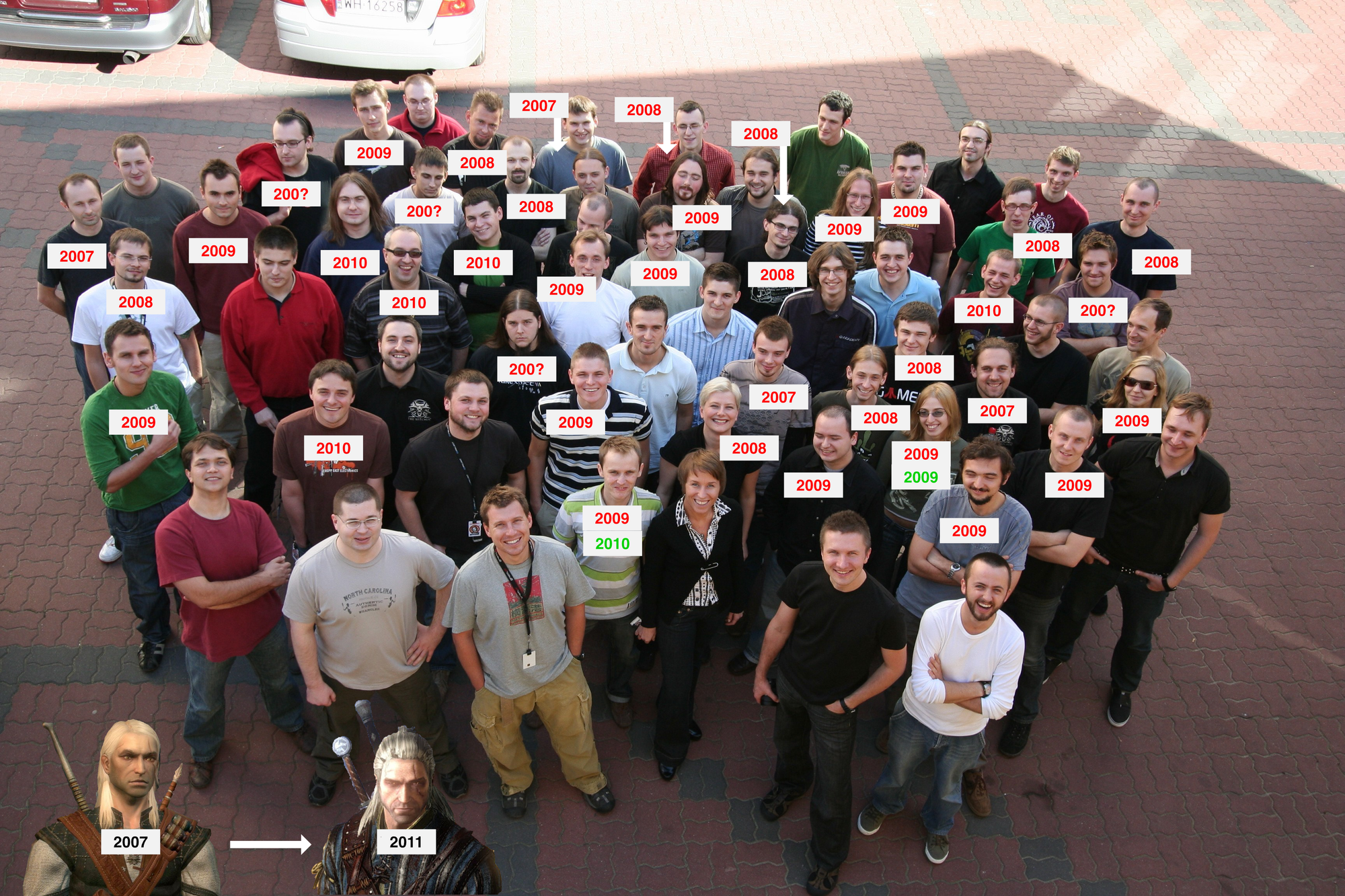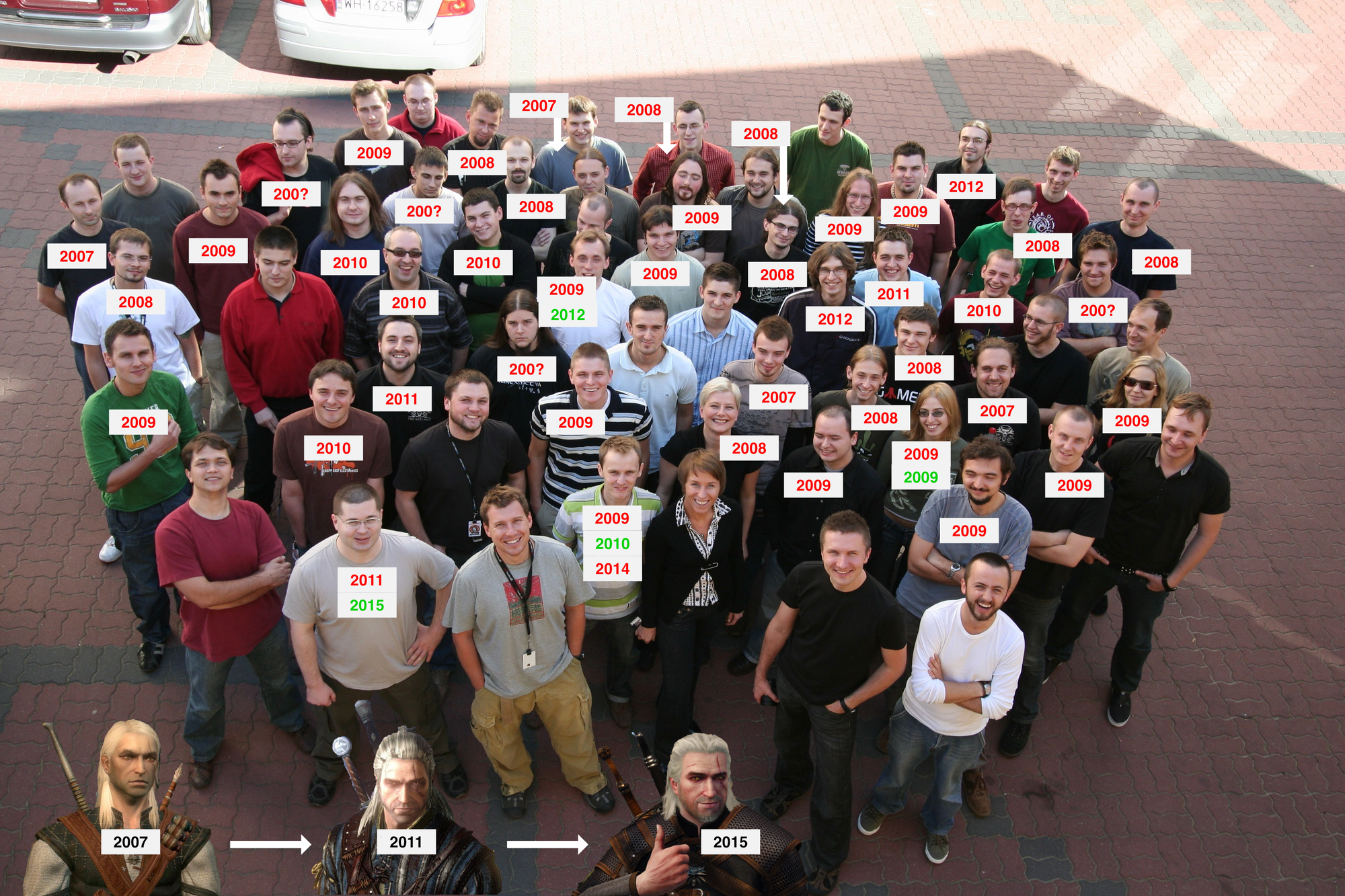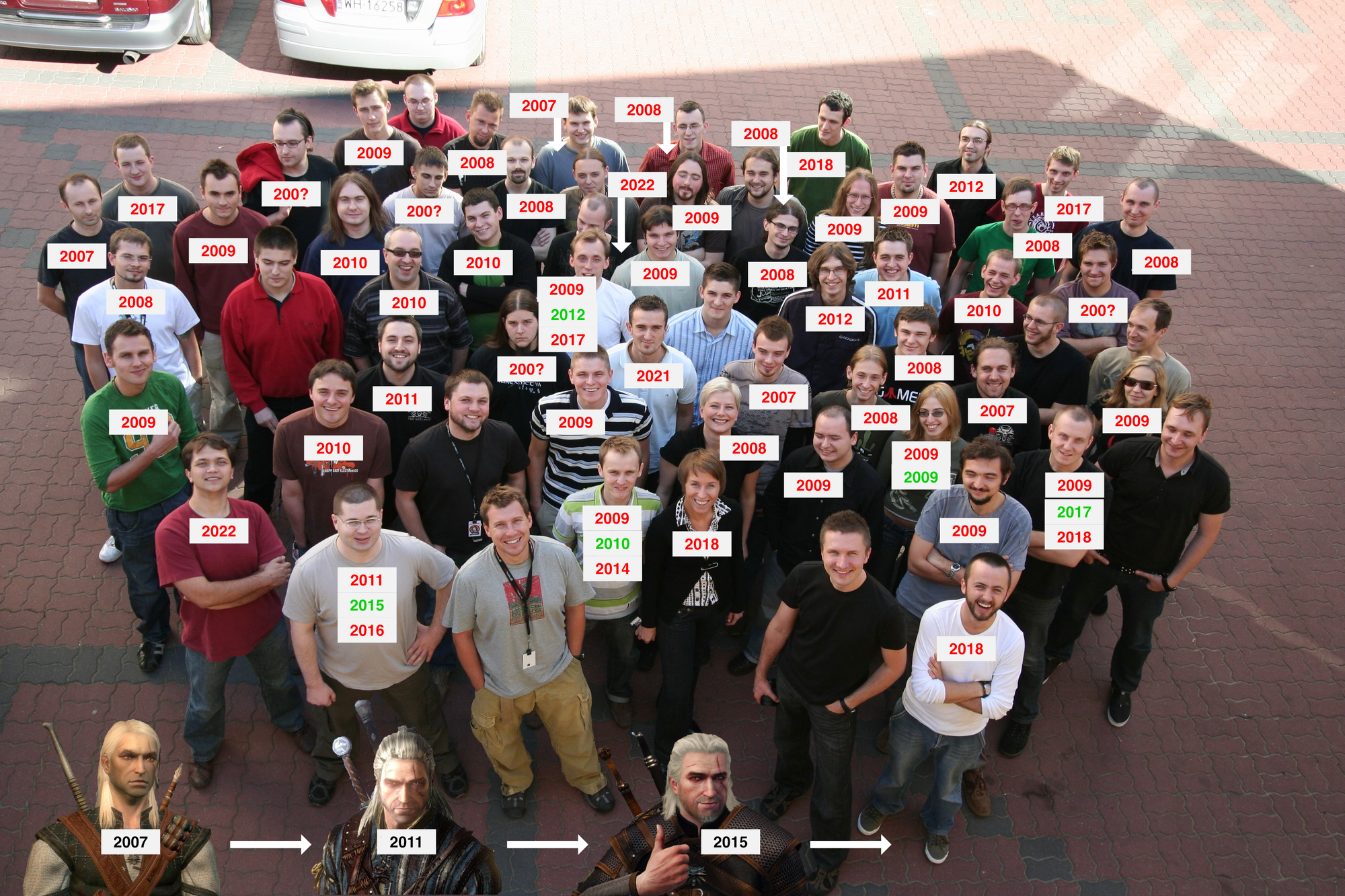The Question of Authorship
This time, I write about ancient history, and wonder how the DNA of a game is preserved.
There is a question that bugs me now and then: if a game is made by dozens, hundreds of people, who is the author? Where does the authorial intent reside? Who is the custodian of the game’s identity?
In the book called How and Why We Make Games we wrote with Marta Fijak, there’s at least one whole chapter dedicated to this problem. Still, the question bugs me.
Especially, now, when so many teams are gutted, so much institutional knowledge and talent is lost, I ask myself another version of the question. What part of a team must remain in a company, so the DNA of the studio is preserved?
The Ship Game Studio of Theseus
You know the intellectual exercise: if I replace a plank in a wooden ship, I am sure this is still the same ship. But if I replace half of the planks with new, identical ones? All of them? Does the ship, at any point, become something else? If yes, when? If not, why?
Today, we’ll take a look at a studio that kept replacing metaphorical planks, and yet the games they produced retained their identity. Refined it, even. We’ll try to deduce how it was achieved.
I’ll be talking about things close to me, and relying on my memories, so please, take all of this with a grain of salt. This is a very subjective story, and other people may have different views on the same events.
The Ship of Geralt
I’m writing this because a memory popped up on my Facebook (as it’s been popping up in August for the last 15 years). It was posted by my friend, Maciek Miąsik, who was the producer of the first Witcher game.
The post from 2010 is a picture of the team that made the game, published (if my memory serves) in the official artbook. In the picture, people who no longer worked at CDPR were marked with red Xs. The title said: The Witcher Team – 3 years later.
When the post was published, fifteen years ago, three years after the release of The Witcher, it sparked heated discussion. After the crisis in 2008, not all partings were voluntary, and those that were were often caused by creative differences. So tempers flared.
Now, a decade and a half and two Witcher games later, when most of those involved either don’t care or feel only bittersweet nostalgia, I decided to revisit those times.
Because I think this is an interesting case study, and a valuable piece of game history.
Disclaimer: Before we proceed, and for those inclined to dig into the details, I feel obliged to add some context. Not all who worked at the first Witcher game are present in the picture, as not all were at work on that particular day. You won’t find Michał Madej, who was leading the design team, Borys Pugacz-Muraszkiewicz, who was responsible for the English version of the text (OK, he is in the picture but was photoshopped in, and will not be featured on the versions of the picture that I will show you later), Mateusz Kanik, who played a crucial role in system design, and some others.
All in all, out of the core 65 people who made The Witcher, at least 40 were gone before The Witcher 2: Assassins of Kings was released. At the same time, new people arrived, and the second Geralt game was great, and so was the third, and the ship remained the same – if not better.
Baptism of Fire
When The Witcher was released and well-received, we were ecstatic. A new, relatively small studio from Poland managed to make a game that was (at the time) compared to and contrasted with BioWare classics (of that era). We did it, and felt unstoppable.
We had been crunching, yes, a lot, but we felt it was worth it – we shared war stories and we forged a team that we felt was destined to deliver more great games. During this time, I was the lead of the story design team, which was responsible for outlining and writing the script, implementing quests, and everything story-related.
This is the original picture – taken, as far as I remember, shortly after the release. We were smiling, the sun was shining, the reviews were good, and the future was bright.
The Bounds of Reason
When The Wicher 2: Assassins of Kings hit the shelves, many planks in the original ship had already been replaced.

What happened? I only have my imperfect understanding of the events, as I remembered them. Right after the release, we felt invincible, and the markets were growing, so the company decided to expand. We decided to work on more than one project at the same time. There were DLCs and expansions planned, both in-house and by outside studios, there were tie-in web games, there was the now-infamous console version, and more.
Among them, two projects were deemed the most important: one was The Big Expansion for The Witcher, made on the already antiquated Aurora engine, the other, The Second Witcher Game, made on and along with a brand new engine. I was working as the lead designer on The Second Witcher Game.
As time passed, the Big Expansion grew so big that it was transformed into a standalone game, the one you will know as The Assassins of Kings. It was still to be made on the Aurora engine. And so, one day, as the numbers shifted, I found myself working on a Witcher 3 – the one that would never see the light of day 🙂
The side effect of all those ambitions was that the great team we had was split among different projects, and people who had just proved that they worked great together were forced to work apart, and when the resources dwindled, against each other.
I am in no position to judge, but I remember that back then, I felt sad about it, like we lost something valuable.
The Lesser Evil
And then the 2008 crisis hit, the publishing business that was the core of CD Projekt's identity at that time crashed, and suddenly, the company teetered on the brink of bankruptcy.
A lesser evil had to be chosen, tough decisions had to be made, and about 10-20% of the employees were let go. Most of the projects were cancelled, and those that weren’t were changed.
When the dust settled, the two big projects became one: the first Witcher 3 prototype was scrapped, but the technology survived and was used to re-create from scratch what had already been done of the Assassins of Kings on the Aurora engine. What was left of the two teams was also merged.
Which, of course, caused problems, as from the two game directors, there could only be one, from the two story leads, there could only be one, from the two gameplay leads… You get the drift. Some people were, understandably I think, unhappy and left. I stayed as the story lead for the old-new project, trying to respectfully continue the work of my predecessor.
It was awkward, and personally, I remember it as a hard and challenging period.
A Little Sacrifice
Looking back, the production of the second Witcher game went as well as it was possible under the circumstances. Using the new technology, we managed to recreate what had been done on the Aurora. We managed to refine the new technology to the point it could ship a game, and we created a lot of great tools (TBH, we felt that any tools were great compared with the previous engine). We made some mistakes along the way, but when compared to how we worked on the first Witcher game (mostly by trial and error and stumbling in the dark, in my opinion), I felt we were doing well. And we managed to ship the actual game!
Unfortunately, beneath the surface, tensions flared. I think that some wounds never healed, and some rifts proved too wide and deep. Different visions clashed on how to run the company, how to plan the production, what was possible and what was not, what costs were acceptable, and what goals we should pursue.
My personal breaking point was the crunch. When it became clear that without lots and lots of overtime we would fail, I decided to leave. For me, the health impact and other repercussions of another three to six months of intensive crunch would be too much.
The main narrative structure of the game was already designed, and I was confident that my co-workers would know exactly how to proceed. It was February 2010, 15 months before the release of The Witcher 2: Assassins of Kings. Around the same time, Jacek Brzeziński, the Head of Development, also left, passing the baton to Adam Badowski.
In the game’s credits, you can find Jacek and me in the section called “Additional Design.”
A Question of Price
I have not worked on the Witcher 3, which I not so secretly regret, because the game was just awesome. The best Witcher that ever witchered, and one of my favourite games of all time.
When it came out, I was working on mobile games, and the game triggered an identity crisis, lasting at least two weeks, when I wondered what I was doing with my life, because had I not left, I could have been working on the Witcher games. But the game was too good to despair, so I just started enjoying it.

During that time, a few more people from the original team left. Some came back. Some of them left again. C’est la vie.
When I left CDPR, the story department was split into two. One part, led by Sebastian Stępień, was responsible for the overall script and writing. The other, led by Konrad Tomaszkiewicz, was responsible for designing quests and implementing the script. As far as I know, the method of work persisted, and both of them played a crucial role in the production of The Witcher 3.
From my perspective, it is clear that although almost nothing remained of the original ship, it sailed true.
The Last Wish
It would be preposterous if I commented on the production of Cyberpunk 2077, so I won’t.

Over the decade after the release of The Witcher 3, more of the original crew left to pursue new endeavors.
Looking back, you can see how all the talented people who left CDPR were crucial to the development of the Polish gamedev industry and turning it into the powerhouse it became. Many international studios also benefited from the diaspora. We can find the work of ex-Witcher folks in games made by Naughty Dog, Activision, Blizzard, Flying Wild Hogs, Techland, Revel Woves, Elsewhere Entertainment, to name just a few.
In the meantime, CDPR changed from an underdog to one of the big league players, attracting hundreds of highly talented people, and still retained its magic.
Eternal Flame
So what keeps the flame alive? What is the magic ingredient that causes the ship to be the same ship, even when so many parts were replaced?
I have no definite answers, but I have some observations.
First, not all parts were replaced. Adam Badowski was there from the very beginning, and his creative oversight was a constant. So was Lucjan Więcek, who is now the Art Director, and Marcin Blacha, who is now VP, Narration. They are not the only ones, but as they are featured in the picture, and I had the chance to work with them, I decided to name-drop and pay my respects.
Second, I hope that institutional knowledge is a thing, and in the ideal world, the ideas and good practices stay written in the documentation, outliving people who wrote them down. I know, we don’t live in an ideal world, and the documents are never up to date. Luckily, we have oral history, and – at least that is my experience – some ideas and ways of solving problems are remembered from old conversations with colleagues, even if they are no longer there.
Third, the game remembers and reminds. This is an idea that Maciek Miąsik presented to me, and I enthusiastically agreed. I think that if a game is good enough and loved enough, you can learn how to make a similar game by playing and analyzing what you already have. The game becomes a collection of design decisions, dos and don’ts, aesthetic choices, voices, moods, sights, sounds, decision spaces, etc, etc. The DNA of the company (or the IP) is stored in the game itself, can be deciphered by anyone receptive and respectful enough, and then used to create something new, exciting, yet similar and bearing the same key characteristics.
In other words, although looking at all pictures can be fun, I think we can let bygones be bygones and focus on waiting for The Witcher 4 because it will probably be a very good game. Fingers crossed.